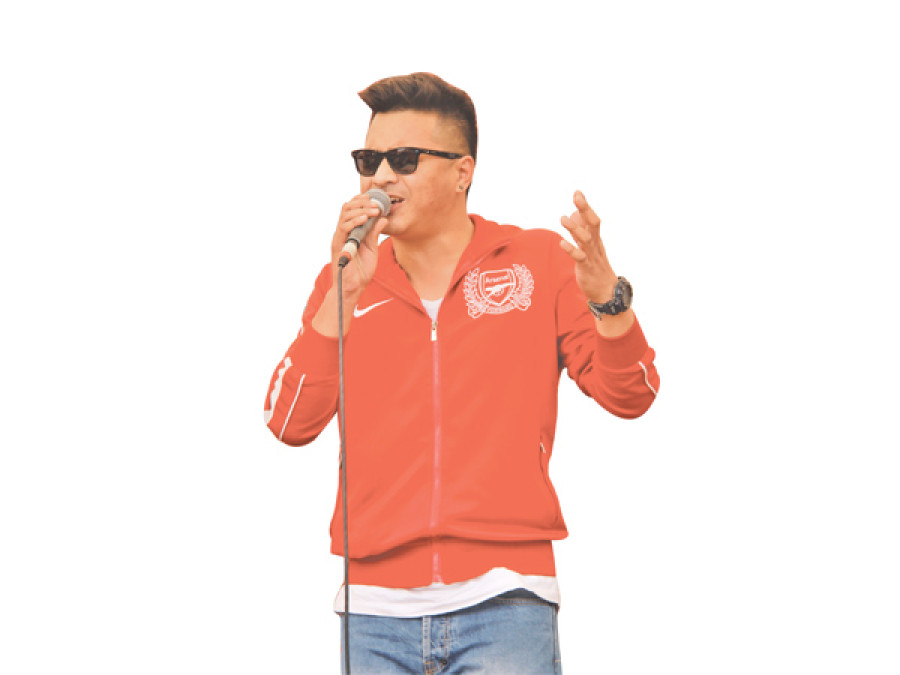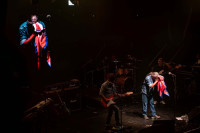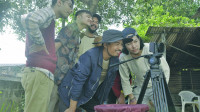Entertainment
On a high note
With his four-octave vocal range, a classical music diploma from Allahabad Music Institute, and multiple nominations for his groups, Prajjwal Mukhiya is now aiming for a new high by singing for 1974 AD
Amir Maharjan
Genres of music in Nepal have never been very explicit, with an artist performing various genres. But Prajjwal Mukhiya, vocalist of What the Funk and 1974 AD, may have the most impressive shift among all. No one will believe if one says that the rockstar looking, funk singing, Stevie Wonder covering singer, with his four-octave vocal range, can also contribute to a
classical piece in the Opera.
Mukhiya’s interest in music was evoked by his parents. They arranged private piano classes for him at a very young age, which opened up an entirely new world for him. After being exposed to music, Mukhiya was drawn to it, and was always eager to learn more. So, during his teenage years, he joined an institute that taught eastern classical music where he completed a two-year diploma in music. He then appeared for an examination taken by the Allahabad Music Institute of India, where he graduated with flying colours. He was the only student to pass with distinction marks. This really boosted Mukhiya’s confidence to take to the stage and perform.
But for Mukhiya, music isn’t just about performance and popularity. Although he has more knowledge than most musicians his age, he is always in the process of learning. He started taking classes with Michelle Ko—a South Korean western classical vocal and piano teacher. Mukhiya then got the opportunity to do a few shows with Michelle in Norway and South Korea. After two years of
studying western classical music, Mukhiya considered studying music in college. He joined Kathmandu Jazz Conservatory (KJC), where he took jazz vocal lessons with Olivia James and Nathalia Calderon. The courses in KJC brought both depth and width to his musical knowledge. “Taking courses at Kathmandu Jazz Conservatory was (for me) the best decision. It not only helped me develop as a musician and a singer, but also gave me an opportunity to reach out to a wider audience,” he said.
While taking courses at KJC, he was also performing with different local bands. After completing his course at KJC, he started playing with the KJC faculty band—What the Funk. His talent attracted many people who were already in the music industry, including Nirakar Yakthumba, the bassist of 1974 AD.
Yakthumba came up with an idea of covering funk songs, a relatively new genre in Nepali music, and asked Mukhiya to join him. What the Funk then started covering popular funk music in their gigs, which recieved encouraging feedbacks. The band’s confidence grew and they invited a brass instrument player, Subash Jung Pandey, to join their band, and started composing their own songs.
One of their first compositions, GaiJatra, earned him nominations for Hits FM Best Rock Vocal, Best Pop Vocal, Best Rock Composition and Best New Artist.
With the rising popularity of the band, Mukhiya’s popularity grew as one of the most versatile singers.
Other than performing with What the Funk, Mukhiya also started teaching vocals at KJC. He now has been teaching there for three years, where he works for around 20 hours a week. “The experience of teaching has had a positive change in my development. I not only get a chance to interact with experienced faculty members and music enthusiasts, but it also creates a platform for me to practice my vocals on a daily basis,” he says.
Mukhiya’s ever rising fame as a singer was soon noticed by 1974 AD, and was asked to join the band. He, along with Rohit John Chettri, became the new vocalists of 1974 AD. Both having different vocal capacities and attributes brought a diversity to this new experimental band, along with their introduction of brass instruments such as trumpet and trombone. “Singing for 1974 AD is very different from singing with What the Funk. You have to live up with the expectations of the audience as well as the band members. After all, I’m playing with a band that inspired me to play music.”




 13.12°C Kathmandu
13.12°C Kathmandu










